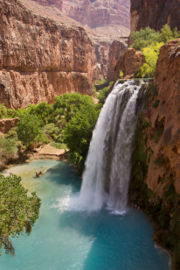|
|
| (70 intermediate revisions by 3 users not shown) |
| Line 1: |
Line 1: |
| − | Water is life. To secure a high standard of living for all people, we must secure a renewable supply of water for drinking, cleaning, cooking, irrigation, heating and cooling. | + | {{:Water}} {{more|Water}} |
| − | | + | |
| − | In the USA in 2006, the average water use per person per day was 575 litres. Compare this with 149 litres in the UK and 4 litres in Mozambique. Peter Gleick has said that 50 litres of water is sufficient for a person[http://en.wikipedia.org/wiki/Water_resources#Uses_of_fresh_water], though this does not take into account non-residential uses of water.
| + | |
| − | | + | |
| − | The intelligent use of mankind's water resources is not just an environmental issue; it is a public health issue. Drinking contaminated water is one of the most common causes of cholera, typhoid, diarrhoea, hepatitis A, dysentery and river blindness.
| + | |
| − | | + | |
| − | If homes are equipped with the means to catch and store rainwater, water consumption can be greatly reduced. In certain climates, a rainwater-catchment system on the home could provide the inhabitants with all the water they need.
| + | |
| − | | + | |
| − | Using composting toilets rather than flush toilets would save 26.7%[http://www.epa.gov/watersense/pubs/indoor.html] of water use in the home. Composting toilets can also be used as a source of fertilizer to grow food and electrodes could even harvest electricity from the bacteria they contain.
| + | |
| − | | + | |
| − | ==Sources of water==
| + | |
| − | The [http://challenge.bfi.org/application_summary/385 Watermill] is an invention that condenses water from the air. This water is clean and ready to drink.
| + | |
| − | | + | |
| − | 97% of the world's water is in the oceans[http://en.wikipedia.org/wiki/Water_resources]. This must be desalinated for most human purposes. Nanofiltration (using filters of the nanometre scale) can be used for desalination. IBM are conducting research into this technology[http://www.inhabitat.com/2010/04/07/ibm-saudi-researchers-team-up-on-solar-powered-desalination-technology/].
| + | |
| − | | + | |
| − | ==Purifying water==
| + | |
| − | Suspended particles can be removed from water by passing them through a filter of layers of gravel and sand. This is within the reach of all the World's people as it requires no input of energy and no technological sophistication. While this makes water safer for drinking, it does not remove all microscopic pathogens that may be contained within the water.
| + | |
| − | | + | |
| − | UV light can kill water-borne pathogens. As [[LEDs]] get cheaper and more energy-efficient, the use of UV-emitting LEDs to sterilize water becomes more and more attractive.
| + | |
| − | | + | |
| − | Nanofilters are an effective way of filtering out both suspended particles (which cause unpleasant tastes, smells and discoloration) and pathogens. The Tata Swach is a device that uses nanofilters to give very pure water. It retails for only $21. However, like other filters, is eventually clogs with impurities. Nanofilters made from carbon nanotubes that are too small to become clogged are being investigated [http://cleantechnica.com/2008/09/15/carbon-nanotubes-might-be-used-in-future-water-filters/].
| + | |
Latest revision as of 18:38, 28 December 2012
With world population growing, demand for food (and hence
water for farming 
) expected to grow by 70%
[1], rivers becoming polluted and one in eight people already without clean drinking water
[2], some have warned that we are heading for a 'peak water' crisis with people lacking the necessary water to survive, and wars breaking out over the access to water supplies
[3]. Already, about half of all infectious disease is caused by contaminated drinking water.
A grim picture, indeed. But fortunately, an entirely avoidable one. Water is one of the most abundant resources available to us on this blue planet. The only problem we may face is synthetic scarcity; this article aims to show that there is no real shortage of water, nor of techniques to purify and manage it. If we simply apply the water-management techniques — many of which are extremely simple, low-tech, low-cost things — we have all the water we could ever need. 
 ) expected to grow by 70% [1], rivers becoming polluted and one in eight people already without clean drinking water [2], some have warned that we are heading for a 'peak water' crisis with people lacking the necessary water to survive, and wars breaking out over the access to water supplies [3]. Already, about half of all infectious disease is caused by contaminated drinking water.
) expected to grow by 70% [1], rivers becoming polluted and one in eight people already without clean drinking water [2], some have warned that we are heading for a 'peak water' crisis with people lacking the necessary water to survive, and wars breaking out over the access to water supplies [3]. Already, about half of all infectious disease is caused by contaminated drinking water.

